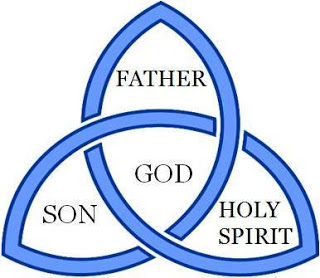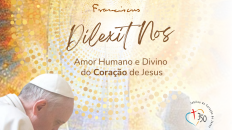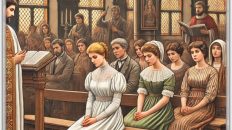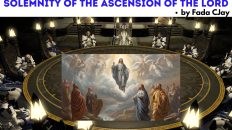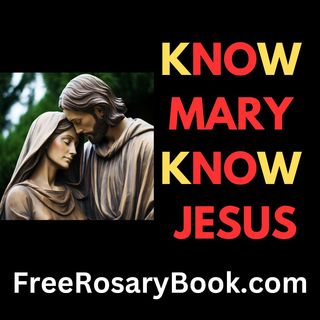SOLEMNITY OF THE MOST HOLY TRINITY
(SUNDAY, MAY 22, 2015)
(SUNDAY, MAY 22, 2015)
The Trinity is not only
a mystery to be understood but a relationship to be lived
a mystery to be understood but a relationship to be lived
·
Introduction
Introduction
·
Relationship of the Readings with the
effect of the Holy Trinity
Relationship of the Readings with the
effect of the Holy Trinity
·
Development of the Trinitarian Doctrine
in the Church
Development of the Trinitarian Doctrine
in the Church
·
The Mystery of the Holy Trinity in the
Old and New testament
The Mystery of the Holy Trinity in the
Old and New testament
·
The message of today’s Feast
The message of today’s Feast
·
Conclusion
Conclusion
A popular story is told
of St. Augustine of Hippo (354AD), a great philosopher and theologian who was
preoccupied with the doctrine of the Blessed Trinity. He made efforts in trying
to understand the doctrine of one God in three persons and to be able to
explain it logically. On a certain day, he consigned to the seashore in order
to reflect properly on this mystery.
Suddenly, he saw a little child who made a hole in the sand, ran to the
sea with a little cup, filled her cup with sea water, ran up and emptied the
cup into the hole she had made in the sand. She repeated this severally and this
caught Augustine’s attention. Finally, he went up and said to her, “Little
child, what are you doing?” She replied,
“I am trying to empty the sea into this hole.” “How do you mean,” Augustine
asked her, “that you can empty this immense sea into this tiny hole and with
this tiny cup?” She answered back, “And you, how do you suppose that with your
little head you can comprehend the immensity of God?” having said this, the
child disappeared.
of St. Augustine of Hippo (354AD), a great philosopher and theologian who was
preoccupied with the doctrine of the Blessed Trinity. He made efforts in trying
to understand the doctrine of one God in three persons and to be able to
explain it logically. On a certain day, he consigned to the seashore in order
to reflect properly on this mystery.
Suddenly, he saw a little child who made a hole in the sand, ran to the
sea with a little cup, filled her cup with sea water, ran up and emptied the
cup into the hole she had made in the sand. She repeated this severally and this
caught Augustine’s attention. Finally, he went up and said to her, “Little
child, what are you doing?” She replied,
“I am trying to empty the sea into this hole.” “How do you mean,” Augustine
asked her, “that you can empty this immense sea into this tiny hole and with
this tiny cup?” She answered back, “And you, how do you suppose that with your
little head you can comprehend the immensity of God?” having said this, the
child disappeared.
Dear friends, today (Sunday, May 22), we celebrate the
Feast of this “immensity” of God, the “Holy Trinity”, a mystery difficult to
comprehend; a mystery which sparks a mathematical contradiction (1+1+1=1). The
mystery of the Holy Trinity is one of the fundamental doctrines of Christianity
and the greatest mystery of our Faith, namely, that there are Three Divine
Persons, sharing the same Divine nature in one God. This doctrine was enunciated
by the ecumenical councils of Nicaea and Constantinople. Thus, “There is one
God, Who has three Persons, Father, Son and Holy Spirit. Each Person is God, yet there is still only
one God” (C.C.C. #234, #253-256). We have Father who is the Creator, Son the
Redeemer and Holy Spirit the Sanctifier and the Counselor. The doctrine of
Three Persons in one God, equal in Divinity yet distinct in Person, is not
explicitly spelt out in the Bible. Even the very word “Trinity” is not found in
the Bible, but the truism of this wonderful mystery is greatly felt in the Holy
Scripture (this we shall discuss in the later part of this reflection). As
Catholics, we bind unto ourselves the strong name of the Trinity. This is seen
in all the official prayers of the Church, including the Holy Mass and the
Sacraments, as we begin with an address to the Holy Trinity: “In the Name of
the Father and of the Son and of the Holy Spirit.” We are baptized, absolved of
our sins and anointed in the name of the Blessed Trinity. Furthermore, we
conclude our prayers with a doxology, that is, glorifying the Holy Trinity,
saying “Glory be to the Father and to the Son and to the Holy Spirit.”
Feast of this “immensity” of God, the “Holy Trinity”, a mystery difficult to
comprehend; a mystery which sparks a mathematical contradiction (1+1+1=1). The
mystery of the Holy Trinity is one of the fundamental doctrines of Christianity
and the greatest mystery of our Faith, namely, that there are Three Divine
Persons, sharing the same Divine nature in one God. This doctrine was enunciated
by the ecumenical councils of Nicaea and Constantinople. Thus, “There is one
God, Who has three Persons, Father, Son and Holy Spirit. Each Person is God, yet there is still only
one God” (C.C.C. #234, #253-256). We have Father who is the Creator, Son the
Redeemer and Holy Spirit the Sanctifier and the Counselor. The doctrine of
Three Persons in one God, equal in Divinity yet distinct in Person, is not
explicitly spelt out in the Bible. Even the very word “Trinity” is not found in
the Bible, but the truism of this wonderful mystery is greatly felt in the Holy
Scripture (this we shall discuss in the later part of this reflection). As
Catholics, we bind unto ourselves the strong name of the Trinity. This is seen
in all the official prayers of the Church, including the Holy Mass and the
Sacraments, as we begin with an address to the Holy Trinity: “In the Name of
the Father and of the Son and of the Holy Spirit.” We are baptized, absolved of
our sins and anointed in the name of the Blessed Trinity. Furthermore, we
conclude our prayers with a doxology, that is, glorifying the Holy Trinity,
saying “Glory be to the Father and to the Son and to the Holy Spirit.”
Today’s readings
summarize the effects of the Trinity in our daily lives. The Book of Proverbs
(8:22-31) reflects on Wisdom, a quality which is identified with God; little
wonder St. Paul identifies Jesus Christ as the Wisdom and Power of God (cf.
1Cor 1:24). St. Paul, in the Second reading (his Letter to the Romans 5:1-5),
teaches us that we have peace with God the Father through Jesus Christ, and
that the love of God has been poured into our hearts through the Holy Spirit
that has been given to us. In the
Gospel, Jesus, the Son of God, mentions the role of the Holy Spirit (…but when
the Spirit of Truth comes, He will lead you to the complete Truth…cf. Jn.
16:12-15) In other words, possessing the gifts of the Holy Spirit (wisdom,
understanding, counsel, knowledge, fortitude, piety, and fear of the Lord)
enables us to attain the complete Truth.
summarize the effects of the Trinity in our daily lives. The Book of Proverbs
(8:22-31) reflects on Wisdom, a quality which is identified with God; little
wonder St. Paul identifies Jesus Christ as the Wisdom and Power of God (cf.
1Cor 1:24). St. Paul, in the Second reading (his Letter to the Romans 5:1-5),
teaches us that we have peace with God the Father through Jesus Christ, and
that the love of God has been poured into our hearts through the Holy Spirit
that has been given to us. In the
Gospel, Jesus, the Son of God, mentions the role of the Holy Spirit (…but when
the Spirit of Truth comes, He will lead you to the complete Truth…cf. Jn.
16:12-15) In other words, possessing the gifts of the Holy Spirit (wisdom,
understanding, counsel, knowledge, fortitude, piety, and fear of the Lord)
enables us to attain the complete Truth.
Having seen the
relationships of the readings with the doctrine of the Blessed Trinity, it is
pertinent at this point to understand the development of the Trinitarian
doctrine in the Church. It is worthy of note that the oldest doctrinal
formulation of the Church’s belief in the Trinity is found in the Apostles’
Creed which has served both as the basis of instruction for catechumens and as
the Baptismal confession of Faith since the second century. Later, the Nicene Creed, originating at the
Council of Nicaea (AD 325), stated the doctrine more explicitly by condemning
the Arian heresy taught by Arius. Arius fell into heresy when he taught that
Christ was not fully God and is unequal with the Father in all respects. The
Council proclaimed Christ’s equality with the Father (drawing its source from
the Holy Scriptures) and thus, proclaiming the dogma of the Blessed
Trinity. God has revealed to us three
separate functions that are carried out by the Three Persons. He has told us that it is proper to attribute
to God the Father the work of Creation, to God the Son the work of Redemption
and to God the Holy Spirit the work of Sanctification. Our knowledge of God as Trinity is made
possible by God, Who has chosen to reveal Himself as Father, Son and Holy
Spirit. As Father, God has brought forth the created universe, including our
own being. As Son, Jesus has made known
a God who hears our cries, who cares and loves us so passionately that He
became one of us (human) in order to suffer for our sins, and even to die for
us. As Spirit, God remains with us and within us, leading us to the complete
Truth.
relationships of the readings with the doctrine of the Blessed Trinity, it is
pertinent at this point to understand the development of the Trinitarian
doctrine in the Church. It is worthy of note that the oldest doctrinal
formulation of the Church’s belief in the Trinity is found in the Apostles’
Creed which has served both as the basis of instruction for catechumens and as
the Baptismal confession of Faith since the second century. Later, the Nicene Creed, originating at the
Council of Nicaea (AD 325), stated the doctrine more explicitly by condemning
the Arian heresy taught by Arius. Arius fell into heresy when he taught that
Christ was not fully God and is unequal with the Father in all respects. The
Council proclaimed Christ’s equality with the Father (drawing its source from
the Holy Scriptures) and thus, proclaiming the dogma of the Blessed
Trinity. God has revealed to us three
separate functions that are carried out by the Three Persons. He has told us that it is proper to attribute
to God the Father the work of Creation, to God the Son the work of Redemption
and to God the Holy Spirit the work of Sanctification. Our knowledge of God as Trinity is made
possible by God, Who has chosen to reveal Himself as Father, Son and Holy
Spirit. As Father, God has brought forth the created universe, including our
own being. As Son, Jesus has made known
a God who hears our cries, who cares and loves us so passionately that He
became one of us (human) in order to suffer for our sins, and even to die for
us. As Spirit, God remains with us and within us, leading us to the complete
Truth.
As stated earlier, the
truism of this great mystery is greatly felt in the Holy Scripture. From the
Old Testament, we see that Yahweh, the God of Israel, was careful to protect
His Chosen People from the pagan practice of worshipping several gods, the Old
Testament books give ONLY INDIRECT AND PASSING REFERENCES TO THE TRINITY, and
the Jewish rabbis never understood them as references to the Holy Trinity. Genesis 1:26 presents God speaking to
Himself: “Let Us make man in Our
own image, according to Our likeness.”
Genesis 18:2 describes how Yahweh visited Abraham under the appearance
of three men, an event that the Russian Orthodox Church celebrates as the
“Trinitarian Experience of Abraham.” In Genesis 11:7, before punishing the
proud builders of the Tower of Babel, God says, “Come, let Us go down among
them and confuse their language. “These passages imply, rather than state, the
doctrine of the Trinity.
truism of this great mystery is greatly felt in the Holy Scripture. From the
Old Testament, we see that Yahweh, the God of Israel, was careful to protect
His Chosen People from the pagan practice of worshipping several gods, the Old
Testament books give ONLY INDIRECT AND PASSING REFERENCES TO THE TRINITY, and
the Jewish rabbis never understood them as references to the Holy Trinity. Genesis 1:26 presents God speaking to
Himself: “Let Us make man in Our
own image, according to Our likeness.”
Genesis 18:2 describes how Yahweh visited Abraham under the appearance
of three men, an event that the Russian Orthodox Church celebrates as the
“Trinitarian Experience of Abraham.” In Genesis 11:7, before punishing the
proud builders of the Tower of Babel, God says, “Come, let Us go down among
them and confuse their language. “These passages imply, rather than state, the
doctrine of the Trinity.
In the New Testament,
we see a clear picture of this mystery. In the annunciation (Luke 1: 26-38),
Luke describes how God the Father sent the angel Gabriel to Mary to announce to
her that God the Holy Spirit, would “overshadow” her, and that God
the Son would be made flesh in her womb. During the baptism of Jesus (Matthew
3: 16-17), the Holy Spirit was shown
descending on Jesus in the form of a Dove, while the Voice of God the Father
was heard from the clouds. John (Chapters 15 through 18), presents the detailed
teaching of Jesus on the Persons of the Holy Trinity. In the preaching mission
given by the risen Lord to the disciples, Jesus commanded them to baptize
people “in the Name of the Father and of the Son and of the Holy Spirit.”
(Confer also Matthew 28:19; John 10:30).
we see a clear picture of this mystery. In the annunciation (Luke 1: 26-38),
Luke describes how God the Father sent the angel Gabriel to Mary to announce to
her that God the Holy Spirit, would “overshadow” her, and that God
the Son would be made flesh in her womb. During the baptism of Jesus (Matthew
3: 16-17), the Holy Spirit was shown
descending on Jesus in the form of a Dove, while the Voice of God the Father
was heard from the clouds. John (Chapters 15 through 18), presents the detailed
teaching of Jesus on the Persons of the Holy Trinity. In the preaching mission
given by the risen Lord to the disciples, Jesus commanded them to baptize
people “in the Name of the Father and of the Son and of the Holy Spirit.”
(Confer also Matthew 28:19; John 10:30).
Our conviction of the
presence of the Triune God within us should help us strive for unity even as it
appears that we live in a diverse society; we should learn to respect and
honour others as “Temples of the Holy Spirit.” We need to see the
Trinity as the model for our Christian families: We are created in love to be a
community of loving persons, just as the Father, Son, and Holy Spirit are united
in love. From the day of our Baptism, we have belonged to the Father, Son and
Holy Spirit. How privileged we are to
grow up in such a beautiful Family! Hence, let us turn to the Father, Son and
Holy Spirit in prayer every day. We are
called to become more like the Triune God through all our relationships. It is
apparent that our modern society follows the so-called “I-and-I” principle of
unbridled individualism and the resulting consumerism. But the doctrine of the Blessed Trinity
challenges us to adopt an “I-and-God-and-neighbor” principle: “I am a Christian insofar as I live in a
relationship of love with God and other people.” Like God the Father, we are called upon to be
productive by contributing positively to the growth and development of the
Church and society. Like God the Son, we
are called to be reconcilers and strive to make peace, just as Christ
reconciled humanity with God by his death and resurrection. Like God the Holy
Spirit, it is our task to uncover and teach truth and to dispel ignorance. This
is known as the Trinitarian Spirituality that should be lived in our present
day society. This is the reason I termed my reflection: “The Trinity is not
only a mystery to be understood but a relationship to be lived”
presence of the Triune God within us should help us strive for unity even as it
appears that we live in a diverse society; we should learn to respect and
honour others as “Temples of the Holy Spirit.” We need to see the
Trinity as the model for our Christian families: We are created in love to be a
community of loving persons, just as the Father, Son, and Holy Spirit are united
in love. From the day of our Baptism, we have belonged to the Father, Son and
Holy Spirit. How privileged we are to
grow up in such a beautiful Family! Hence, let us turn to the Father, Son and
Holy Spirit in prayer every day. We are
called to become more like the Triune God through all our relationships. It is
apparent that our modern society follows the so-called “I-and-I” principle of
unbridled individualism and the resulting consumerism. But the doctrine of the Blessed Trinity
challenges us to adopt an “I-and-God-and-neighbor” principle: “I am a Christian insofar as I live in a
relationship of love with God and other people.” Like God the Father, we are called upon to be
productive by contributing positively to the growth and development of the
Church and society. Like God the Son, we
are called to be reconcilers and strive to make peace, just as Christ
reconciled humanity with God by his death and resurrection. Like God the Holy
Spirit, it is our task to uncover and teach truth and to dispel ignorance. This
is known as the Trinitarian Spirituality that should be lived in our present
day society. This is the reason I termed my reflection: “The Trinity is not
only a mystery to be understood but a relationship to be lived”
Dear
friends in Christ, today’s feast invites us to live in the awareness of the
presence of the Triune God within us: the Father, the Son and the Holy Spirit.
Hence, it is not simply about trying to understand the mystery of the Trinity:
it is about living the life of the Trinity. The Trinity is the foundation of
everything. The world did not spring from darkness and obscurity but came into
being out of the vivacious fecundity within the Trinity. And the Trinity does
not just explain the mystery of the world; it also explains the mystery of
human nature.
friends in Christ, today’s feast invites us to live in the awareness of the
presence of the Triune God within us: the Father, the Son and the Holy Spirit.
Hence, it is not simply about trying to understand the mystery of the Trinity:
it is about living the life of the Trinity. The Trinity is the foundation of
everything. The world did not spring from darkness and obscurity but came into
being out of the vivacious fecundity within the Trinity. And the Trinity does
not just explain the mystery of the world; it also explains the mystery of
human nature.
HAPPY
FEAST-DAY & HAPPY SUNDAY TO YOU ALL!!!
FEAST-DAY & HAPPY SUNDAY TO YOU ALL!!!
